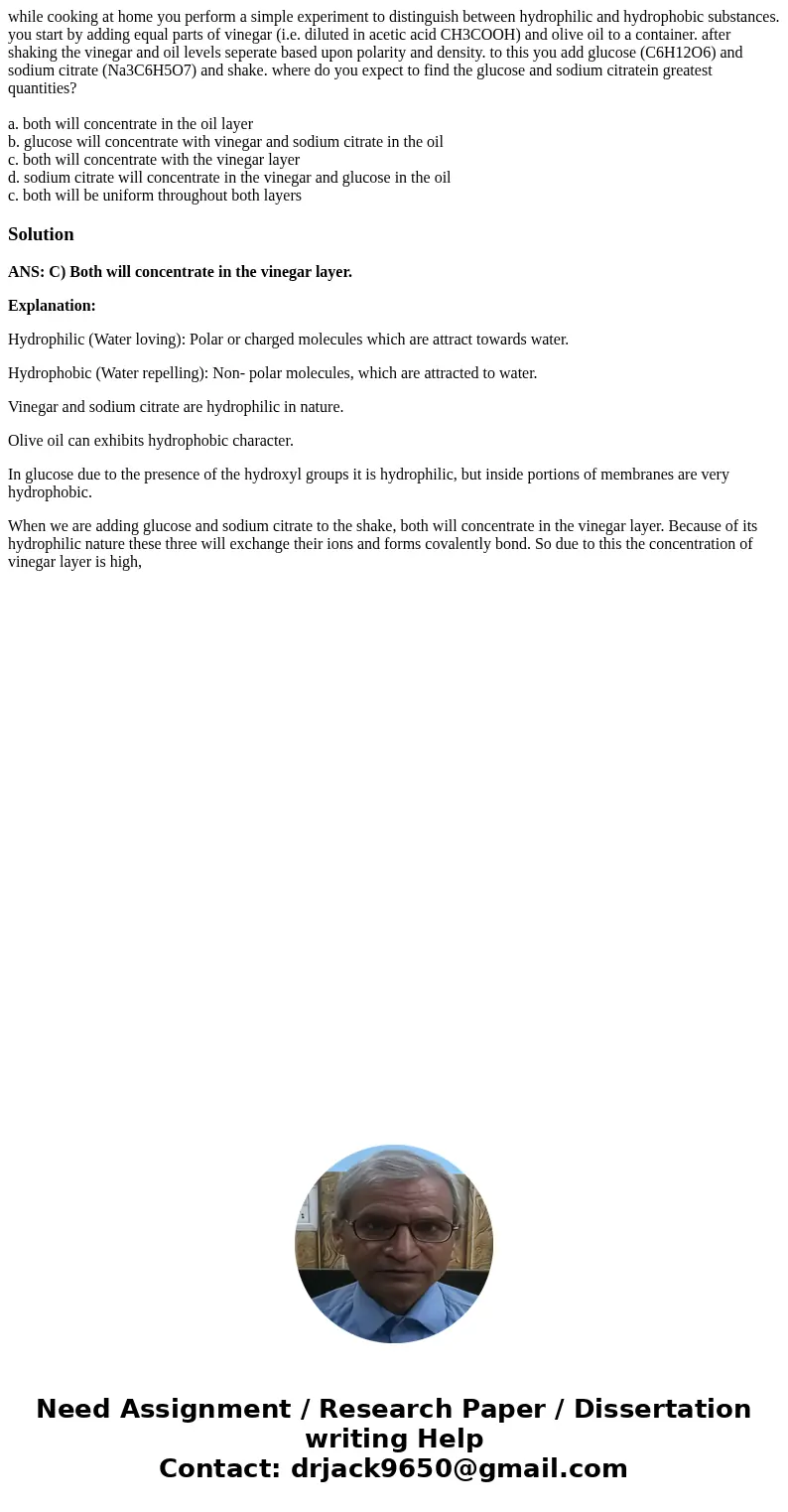while cooking at home you perform a simple experiment to dis
while cooking at home you perform a simple experiment to distinguish between hydrophilic and hydrophobic substances. you start by adding equal parts of vinegar (i.e. diluted in acetic acid CH3COOH) and olive oil to a container. after shaking the vinegar and oil levels seperate based upon polarity and density. to this you add glucose (C6H12O6) and sodium citrate (Na3C6H5O7) and shake. where do you expect to find the glucose and sodium citratein greatest quantities?
a. both will concentrate in the oil layer
b. glucose will concentrate with vinegar and sodium citrate in the oil
c. both will concentrate with the vinegar layer
d. sodium citrate will concentrate in the vinegar and glucose in the oil
c. both will be uniform throughout both layers
Solution
ANS: C) Both will concentrate in the vinegar layer.
Explanation:
Hydrophilic (Water loving): Polar or charged molecules which are attract towards water.
Hydrophobic (Water repelling): Non- polar molecules, which are attracted to water.
Vinegar and sodium citrate are hydrophilic in nature.
Olive oil can exhibits hydrophobic character.
In glucose due to the presence of the hydroxyl groups it is hydrophilic, but inside portions of membranes are very hydrophobic.
When we are adding glucose and sodium citrate to the shake, both will concentrate in the vinegar layer. Because of its hydrophilic nature these three will exchange their ions and forms covalently bond. So due to this the concentration of vinegar layer is high,

 Homework Sourse
Homework Sourse